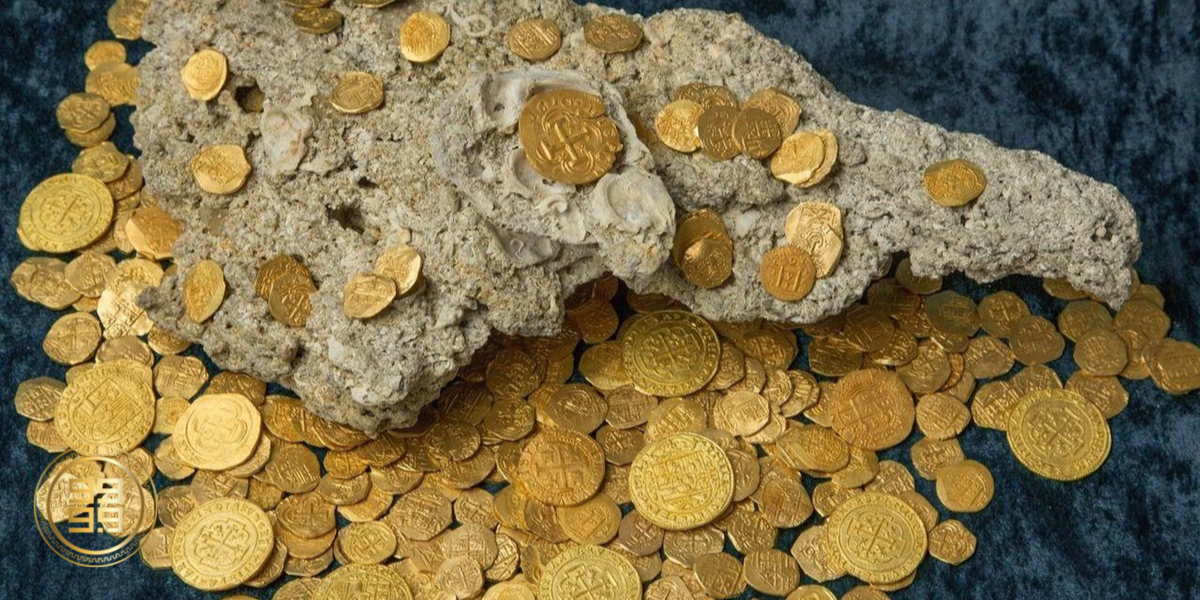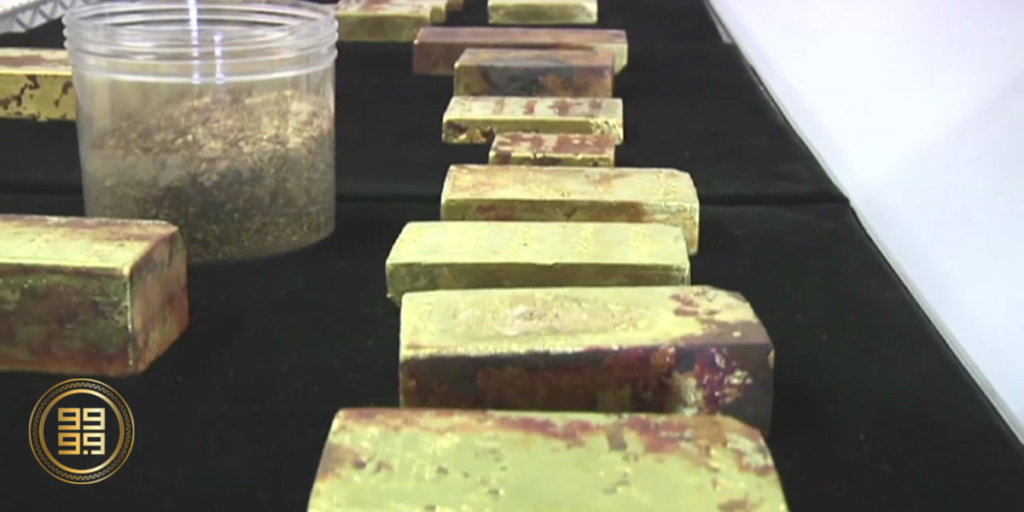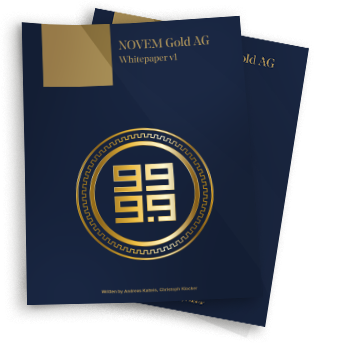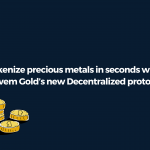
Nothing, assuming that we are talking about pure gold (not low-carat). Gold in the ocean doesn’t rust and seems to be able to last forever. It will be unharmed and undecaying – as if it were immortal, compared to wood, copper, iron, and other materials.
Pure Gold in the Ocean
Gold will not “decompose” in saltwater. In fact, salt (or ocean, sea) water won’t affect gold, no matter how long the gold is in the water. Gold is also entirely not affected by most strong acids. The only thing that can attack gold at normal temperatures is “Aqua Regia”. It is a mixture of 1 part concentrated nitric acid to 3 parts concentrated hydrochloric acid. Gold will slowly dissolve in this mixture but pure nitric acid or pure hydrochloric acid will have no effect.

Coins in The Ocean
Coins that spend thousands of years sunk can get scratched, corroded, worn down, covered by lime deposits and sea life, or harmed by acid conditions. Water temperature also matters. The warm Caribbean waters and the tropics may cause the most damage to coins in the ocean, as warmer temperatures speed up corrosion oxidation. These waters also contain micro-organisms and coral, which can encrust the coins. Cooler northern waters are more likely to help keep all kinds of coins looking good.
The ocean bottom conditions can also make a difference. A muddy bottom may help protect coins encasing them. On the opposite, swirling sand may cause scratches and wear down markings and designs. This will definitely deplete the value of the coins.
The depth matters as well: deep waters have weaker currents that don’t move the sand at the bottom, encasing the coins. In some cases, though, sand can be a good thing. The S.S. Central America sank in 1857 in calcium carbonate sands that made the surrounding water slightly alkaline and kept potentially damaging acidity at bay. Consequently, the ship’s coins in the ocean were almost pristine when they were uncovered in 1987.
Saltwater can damage silver and copper coins pretty quickly, but it has almost no effect on pure gold ones. But even a gold coin can suffer damage if the ship’s wood breaks down and makes the local environment more acidic.
Shipwrecks & Gold in the ocean
Why did ships transport so much gold? The answer may be as simple as that: for security. Many ships with gold that sank in the Caribbean and the Florida Straits were a part of Spanish “treasure fleets.” It was done to protect their gold on the way from the New World to Europe. The Spanish placed large quantities of treasure under the protection of those packs of ships, which were intended to scare off pirates. Wrecks of Spanish treasure ships, either sunk in naval combat or by storms (1622, 1715, 1733, and 1750 were among the worst) make treasure hunters search for gold in the ocean.
Easy Gold Ownership Process from Novem Gold
Novem Gold has designed digital gold ownership products that enhance the access and flexibility of gold trading.
Meanwhile, Novem Gold’s NNN tokens are gold-backed coins that are revolutionizing the gold trade. 21 kilos of securely stored LBMA-certified physical gold back the tokens on the NEO blockchain. These tokens can be fully redeemed for the precious yellow metal. With the NNN token, you can own gold without the hassle of access, validation, and storage from anywhere in the world.






